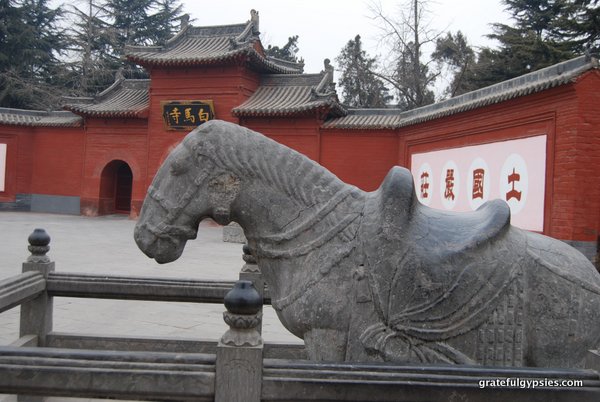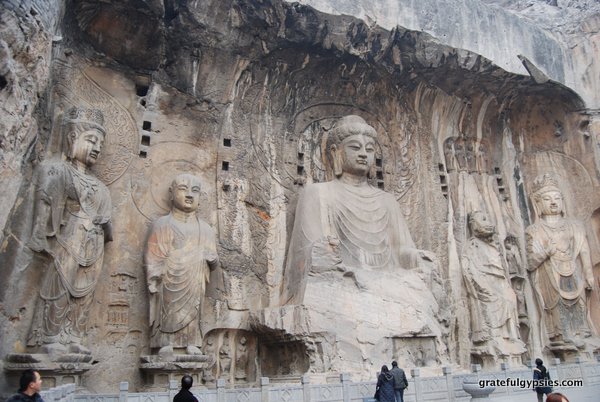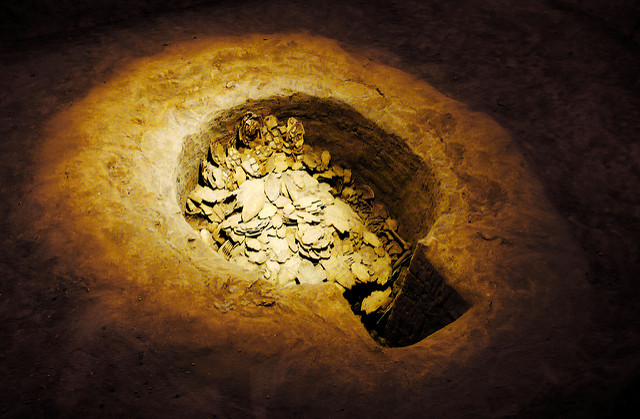Better Know a Province… Henan Posted by sasha on Sep 1, 2016 in Uncategorized
We’re continuing on our long journey across China, one province at a time. Today, we head to the central part of the country to visit one of the most historical provinces – Henan (河南 – hé nán). Once home to ancient capitals and great dynasties, this province is rich in history and culture and is a fascinating place to explore.
History
Henan is known as the cradle of Chinese civilization. The one-character abbreviation for Henan is 豫 (yù), named after Yuzhou (豫州 – yù zhōu). This was a Han Dynasty state that included parts of modern day Henan. The remains of some of the earliest human settlements have been discovered here, such as the Yangshao Culture (仰韶文化 – yǎng sháo wén huà) dating back to 5000-3000 BC. This area was also home to the Xia Dynasty (夏朝 – xià cháo), the first in traditional Chinese history. Henan would remain the cultural, political, and economical center of China for many years. Many dynasties had their capital here. In fact, Henan is home to four of the Eight Great Ancient Capitals of China – Luoyang, Anyang, Kaifeng, and Zhengzhou. During the Shang Dynasty, the capital (then called Yin) was located in present day Anyang. This is where Chinese writing was created, as evidenced by the discovery of oracle bones (甲骨 – jiǎ gǔ), which provided important history on the Shang Dynasty and eventually led to the Chinese script.
The modern history of Henan is not quite as glorious as its ancient past. During the Second Sino-Japanese War, a dam near Zhengzhou was bombed to halt the progress of the Japanese forces. However, this ended up causing massive flooding which led to hundreds of thousands of deaths. A few years later, a great famine struck the region. Henan was also home to the first people’s commune that ushered in the disastrous Great Leap Forward, and it would be one of the hardest hit areas in China with even more famine. During the 1970s, when China was one of the poorest countries in the world, Henan was one of the poorest provinces in the country. The economic reforms ushered in by Deng Xiaoping were slow to reach inland provinces such as Henan, but a few decades later the development came and has been moving forward at a break-neck speed ever since.
Geography

A look at Henan’s place in China.
The name Henan literally means “South of the River.” This comes from the fact that the province is split by the Yellow River (黄河 – huáng hé) with 1/6 of the province north of the river and the rest to the south. It’s located in the central part of the country, sharing a border with Shanxi and Hebei to the north, Shandong and Anhui to the east, Shaanxi to the west, and Hubei to the south. Topographically, it can be divided into two parts – the western highlands and the eastern plains. It’s surrounded by four mountain ranges in the north, west, and south. Mt. Song (嵩山 – sōng shān) – one of the Five Great Mountains of China – is also located here. The province is divided into seventeen prefecture-level cities, along with one county-level city. The provincial capital, Zhengzhou (郑州 – zhèng zhōu), lies in the northern part of the province.
Climate
Henan has a temperate climate with four distinct seasons. Thanks to the East Asian monsoon, summers here are hot and humid. Although the Taihang Mountains protect Henan somewhat from the Mongolian winds, winter can get quite cold. Most of the rainfall here occurs during the summer months. It’s also subject to alternating years of heavy rains and drought, which can bring about severe dust storms in the summer. The best times to visit Henan are spring and autumn, when the weather is more mild.
Population
As of 2010, the population of Henan was just above 94 million. This makes it the 3rd most populous province in China behind Guangdong and Shandong. If Henan were its own country, it would be #15 in the world – just behind Vietnam and ahead of Egypt. The vast majority (nearly 99%) of the people in Henan are Han, with very small populations of Mongols and Manchus in some area. Most of them have been absorbed and Sinicized.
Culture

White Horse Temple outside of Luoyang.
Henan cuisine (河南菜 – hé nán cài), also simply known as Yu cuisine (豫菜 – yù cài), isn’t included in the Eight Great Culinary Traditions of China, but that doesn’t mean they aren’t cooking up anything tasty there! The city of Luoyang is home to the famous “water banquet” (水席 – shuǐ xí) – a set meal of 24 dishes (8 cold and 16 warm). The name comes from the way in which the dishes are served in sequence, just like flowing water. Your mouth may be watering after you see what it looks like:
Henan opera, known as Yuju (豫剧 – yù jù), is one of the most famous national opera forms in China. Check it out in this short YouTube video:
Of course, you can’t talk about the culture of Henan without mentioning Shaolin Kungfu (少林功夫 – shào lín gōng fū), which originated here over 1,500 years ago.
Famous Places

The amazing Longmen Grottoes.
Henan is home to many historical relics and landmarks. In Luoyang, you can visit the amazing Longmen Grottoes (龙门石窟 – lóng mén shí kū), one of the finest examples of Chinese Buddhist art. You can also see the White Horse Temple (白马寺 – bái mǎ sì), the first Buddhist temple in China.
Other popular places to visit in Henan include the famed Shaolin Monastery (少林寺 – shào lín sì) located near at Mt. Song. Here you can go hiking up in the mountain, explore the ancient temple, or even study martial arts.
Thanks to its central location and excellent transportation access, Henan is easy to include on your China itinerary. Consider stopping here in addition to other more famous places like Beijing and Xi’an. If you’re interested in the history and culture of China, there are few places better than Henan.

Build vocabulary, practice pronunciation, and more with Transparent Language Online. Available anytime, anywhere, on any device.
About the Author: sasha
Sasha is an English teacher, writer, photographer, and videographer from the great state of Michigan. Upon graduating from Michigan State University, he moved to China and spent 5+ years living, working, studying, and traveling there. He also studied Indonesian Language & Culture in Bali for a year. He and his wife run the travel blog Grateful Gypsies, and they're currently trying the digital nomad lifestyle across Latin America.





Leave a comment: